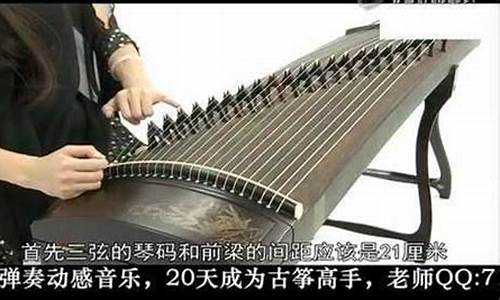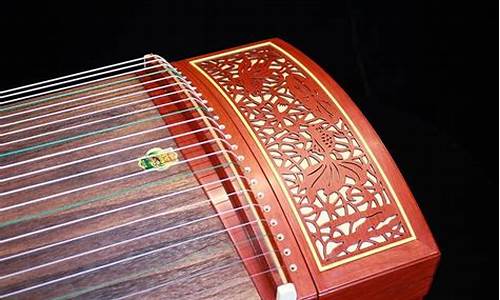古筝介绍英文简短带翻译版_古筝介绍英文简短带翻译
1.个人介绍 英语 快帮我翻译
2.架子鼓,古筝,二胡用英语怎么翻译

学古筝三年级英语日记带翻译
在暑开始时,我就开始在英杰教育学古筝,每个星期日或星期六我都去学一次,其它日子我只是去把刚学的练一练,手指好难摆动的。刚刚学的时候,身体好难受,不过老师对我很热情,关心,我现在可以弹一些曲子,我在那里无聊的时候,那里的老师就和我一起玩,那里有好多和我年龄一样大的孩子,有的`学画画,有的学钢琴,等等好多人。我在那里还可以跟其他学生学另外的艺术,比如钢琴,二胡,画画,等等,他们很像小老师,在指导我。
At the beginning of summer vacation
I began to learn guzheng in Yingjie education. Every Sunday or Saturday
I go to learn it. On other days
I just practice what I just learned. Fingers are hard to swing. When I was just learning
I was very sick
but the teacher was very warm and concerned about me. Now I can play some music. When I was bored there
the teacher there played with me. There were many children as old as me
some learning to draw
some learning to steel piano
and so on. I can also learn other arts with other students there
such as piano
erhu
painting
and so on. They are very like little teachers
guiding me.
可现在我才上来5节课,还不是太熟,不像老师只看一遍就会弹了,我也好想像老师那样的熟悉而我好像非常生疏一样。
But now I only e up with five classes
which is not very familiar. Unlike the teacher who can play only once
I can also imagine that I am as familiar as the teacher and I seem very strange.
不过呢我要继续努力,争取超过老师,自己也会当一个小老师,以后我会每天都好好地练习,把它给打败。
However
I will continue to work hard to surpass the teachers and bee a little teacher myself. I will practice hard every day and beat it.
个人介绍 英语 快帮我翻译
CHINESE MUSICAL INSTRUMENTS
There are many deep traditions of the bowed, plucked, wind, and percussion instrument families, and many in these families of instruments are listed here below. These instruments are used for traditional music, classical music, folk music, and modern music and compositions (there are also many other older instruments used by the many Minority groups in China). (NOTE - all of the tunings listed in the bowed and plucked instruments are from the lowest pitched strings to the highest - and the word "qin" 琴 means "instrument"):
Bowed Instruments:
1.Erhu 二胡 - the Chinese two string violin with metal strings, tuned a fifth interval apart, to D and A, or sometimes to C and G. "Huqin" is the name for this family of Chinese bowed instruments; and "qin" is the general name for an instrument. It is called nanju (or the nanhu 南胡 ) by Cantonese and Taiwan people..
2.Jinghu 京胡 - the Beijing Opera two string violin pitched one octe above the erhu. The soundbox is made of bamboo and the strings are usually metal; traditionally the strings were silk, and silk strings are occasionally still used. The strings are tuned a fifth interval apart.
3.Gaohu 高胡 - the soprano version of the two string erhu, tuned a fourth interval higher than the erhu, with metal strings tuned a fifth interval apart.
4.Zhonghu 中胡 - the deeper "viola" version of the two string erhu, with metal strings tuned in fifth intervals; and tuned a fourth or a fifth lower than the erhu.
5.Gehu 革胡 - the deeper "cello" version of the two string erhu, with metal strings tuned a fifth interval apart. Bei gehu 倍革胡 is the big deeper "bass" with four metal strings tuned in fifth intervals.
6.Sihu 四胡 - an erhu type instrument with four silk strings tuned in fifth and fourth intervals, to C-G-C-G, or D-A-D-A. It sounds much like the human voice, and it has a bow which has two simultaneous bowing parts.
7.Dalei 大擂 - an erhu type instrument with the soundbox made of copper, tuned lower than the erhu, also sounding much like the human voice, with two metal strings tuned a fifth interval apart; traditionally they were tuned a fourth interval apart.
8.Banhu 板胡 - a loud erhu type instrument made of coconut, with two metal strings tuned in fifth intervals.
9.Nanju (or the Nanhu 南胡 ) - the Cantonese opera erhu, with two metal strings tuned a fifth interval apart.
10.Matouqin 马头琴 (or in Mongolian, the Morin Huur, the Morin Khuur, the Morin Xuur, the Morin Khor, or the Marinhur, or the Chaoer in eastern Mongolia), the Mongolian deep sounding two string bowed instrument that got its name from the carved horse head by the tuning pegs, with nylon or metal strings, and traditionally with horsehair strings, and they are tuned a fifth interval apart. There are three different sizes, like the Western violin, viola, and cello. Traditionally in eastern Mongolia the fingerboard is played normally like a violin, and the instrument is also called the Chaoer, but in western Mongolia, traditionally the string is played where the bottom of the nail meets the skin of the finger, so that the sound is produced with both the nail and the finger. Di Matouqin 低马头琴 - the bigger and lower pitched Matouqin, also tuned in fifth intervals.
Plucked Instruments:
1.Pipa 琵琶 - the four string Chinese fretted lute, with metal strings, and occasionally with silk strings. It is tuned G-C-D-G, or A-D-E-A.
2.Liuqin 柳琴 - the small pipa, the Chinese fretted lute, with three or four metal strings. It has either three strings tuned G-D-G, or four strings tuned G-D-G-D; and the four strings can also be tuned in fifths like a Western violin, to G-D-A-E.
3.Yueqin 月琴 - also called the "moon guitar", played with the Beijing Opera, a banjo-like fretted instrument with three or four metal strings. It is tuned A-D-A, or G-C-G, or D-A-D, or C-G-C; or with four strings, it is tuned D-A-D-A, or C-G-C-G.
4.Ruan 阮 - similar to the yueqin, but it has a hollow soundbox and a longer neck. It has three or four metal strings and is fretted. Xiaoruan 小阮 has three strings tuned D-A-D, or four strings tuned D-A-D-A. Zhongruan 中阮 , the medium lower ruan, has four metal strings tuned D-A-D-A, or to G-D-G-D; or tuned in fifth intervals like the Western cello to C-G-D-A, and it is fretted. Daruan 大阮, the big bass ruan, is traditionally tuned D-A-D-A, and in modern times it is also tuned in fifth intervals like the Western cello C-G-D-A, and it is usually bowed.
5.Sanxian 三弦 - the three string unfretted lute with metal, or gut, or nylon strings, with a long neck and made of snake skin. This instrument is also played in Japan, and it is also the main instrument for traditional music in Okinawa. It is tuned C-G-C.
6.Yangqin 扬琴 - the hammered dulcimer, called the "Butterfly Harp."
7.Guqin 古琴 - (or the qin), the ancient seven string Chinese zither with metal strings wred with nylon, played by sliding the fingernail up the strings. It originally had five strings, and was called the qin, meaning "instrument," or "stringed instrument"; and the term "gu" means ancient. The standard tuning (listed in the key of C) is G-A-C-D-E-G-A. Another very common tuning (for the key of F) is C-D-F-G-A-C-D, and there are many others.
8.Guzheng 古筝 (or the Gu-Zheng, or the Zheng, or the Cheng), the Chinese zither/ harp with 16 to 25 strings and a moveable bridge. The 18 string and the older 16 string ones he metal strings and the 21 to 25 string ones he wire strings wred with nylon. Traditionally the older instrument had 13 strings made of silk, and that one was the ancestor of the Japanese Koto. The two most common tunings are the C pentatonic scale (C-D-E-G-A), and the G pentatonic scale (G-A-B-D-E); the pentatonic scale has the first, second, third, fifth, and sixth degrees of the scale.
9.Konghou 箜篌 - the vertical guzheng, the Chinese zither/harp, somewhat like a Western harp, with four pedals, and it usually has five or six octes. It has metal strings wred with nylon in the lower section, and the higher strings are sometimes metal.
10.Se 瑟 - the ancient 50 string zither with a moveable bridge, which is no longer played. It may he been the forerunner of the guzheng, the Chinese zither/ harp (see related article). It had silk strings.
11.Hudie Zheng 蝴蝶筝 - somewhat like two guzhengs combined, sometimes called the "butterfly guzheng", which is a recent invention, but rarely played. It has metal strings wred with nylon, and some of the high strings can be metal. It has a set of 25 strings tuned normally to a pentatonic scale on the right side (with the first, second, third, fifth, and sixth degrees of the scale - in the key of C those notes are C, D, E, G, and A), where the bridge is moveable; and on the left side of the bridge, with notes that cannot be bent (and without a moveable bridge), a set of strings is tuned in half steps to all twelve chromatic Western pitches within the octe; also the left side has some pairs of strings that are tuned to the same notes that correspond to the notes of the strings on the right side of the bridge that are in the pentatonic tuning.
12.Khomuz (or the Koxianqin 口弦琴) - the Mongolian jaw harp with one or two metal reeds, played by holding it in the mouth and changing the tones with the mouth city.
13.Duxianqin 独弦琴 - an old one string instrument with a metal string supported by a wood bow, played by plucking the string and bending the wood bow.
Wind Instruments:
1.Xun 埙(or the Huin, or the Hsuin, or the Hsun) - a clay wind instrument with eleven holes. It was revived by the Guzheng master Cao Zheng in the early 10s, and it became very popular again in 1998.
2.Dizi 笛子 - the horizonal side-blown bamboo flute.
3.Xiao 箫 (or the Hsiao) - the vertical bamboo flute.
4.Paixiao 排箫 - Chinese pan-pipes.
5.Sheng 笙 - the bamboo mouth organ, blown both in and out. It was the ancient ancestor of the Western harmonica. Diyinsheng is the big mouth organ with 48 pipes.
6.Hulusi 葫芦丝 - made of bamboo or another plant such as straw grass, and played like a mouth organ, blown both in and out. Shuangguan Hulusi is the double-reed hulusi.
7.Bawu 巴乌 - the small and deeper sounding bamboo flute.
8.Guanzi 管子 - the short cylindrical-bore oboe type older flute, made of wood. Shuangguan 双管 is a double-pipe flute made of wood.
9.Suona 唢呐 - Chinese trumpet, further specialized into gaoyinsuona, the soprano trumpet; zhongyinsuona, the lower trumpet; and diyinsuona, the bass trumpet.
这样应该挺详细的吧,嘿嘿·
架子鼓,古筝,二胡用英语怎么翻译
My name is Ma Huizhe. I like do sports. For example: The rope skipping, the swimming and the ice skating are my most love. My special skill is the ball zheng, sings. My zheng already eight levels. Fierce? My forites fruit is le and orange...I don't like the durian, because I think it dosn'the a nice-smelling...The discipline I most like is Chinese, because I thought that the Chinese character has the mystical feeling very much, moreover very interesting...So much I said, did you he many understandings to me?
架子鼓(Drum) 架子鼓是爵士乐队中十分重要的一种无音高打击乐器,它通常由一个脚踏的低音大鼓(Bass Drum,又称"底鼓")、一个军鼓、二个以上嗵嗵鼓(Tom-Tom Drum)、一个或两个吊镲(Ride Cymbal)和一个带踏板的踩镲(Hi-Hat)等部分组成。鼓手用鼓锤击打各部件使其发声。爵士乐中常用的鼓锤有两种,一种是木制的鼓棒,另外一种是由钢丝制成的钢丝刷。
古筝
1,Guzheng Zither
2,Chinese ancient zither
二胡urheen,urhien,urhheen
扬琴dulcime
笛子flute
钢琴 piano
小号clarino
大号sousaphone
萨克斯管saxophone
声明:本站所有文章资源内容,如无特殊说明或标注,均为采集网络资源。如若本站内容侵犯了原著者的合法权益,可联系本站删除。












